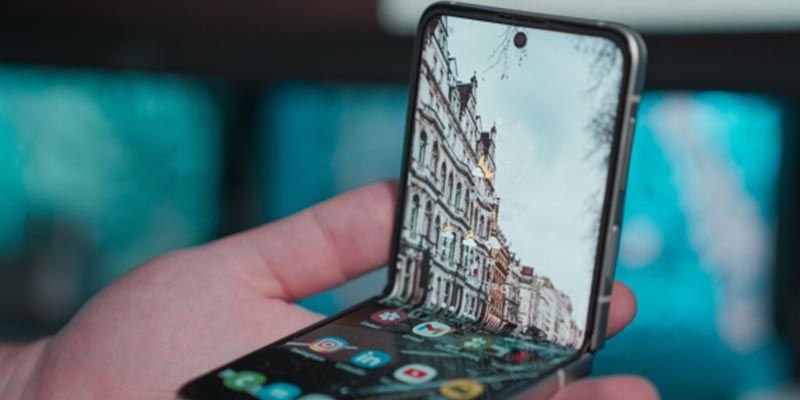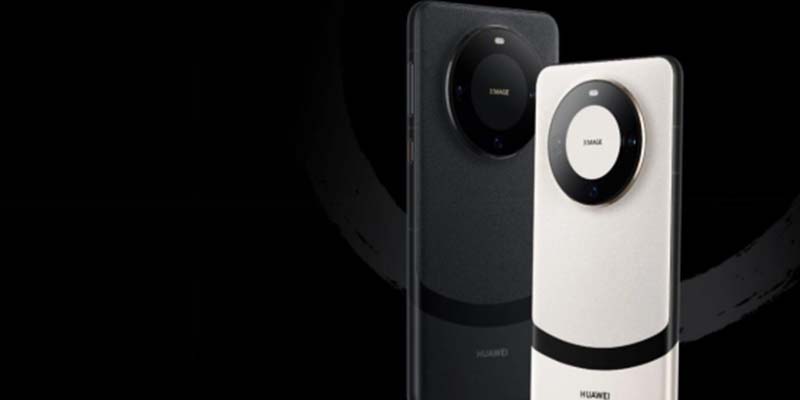Using a folding phone can be an exciting and innovative experience, as it represents a significant advancement in the world of mobile devices. These devices have gained increasing popularity in recent years, with major brands such as Samsung, Motorola, and Huawei all offering their rendition of foldable phones.
Of course, foldable mobile phones offer their fair share of unique advantages and disadvantages compared to traditional smartphones. Here, we will explore everything we need to know about the revolutionary devices. From their history to a fair comparison to ordinary mobile phones, we will assess the overall appeal of foldable phones.
Introducing the emergence and development history of foldable mobile phones
The concept of folding phones has been around for quite some time. But it’s only in recent years that they have become a commercially available and mainstream product. The development and evolution of foldable mobile phones can be traced back to a few key milestones:
Early Concepts (Pre-2010)
The idea of folding phones dates back to early science fiction, with it being mentioned in movies like Star Trek Beyond and Westworld. However, it began to take shape in real life in the form of prototypes and concept designs in the early 2000s. Companies like Samsung showcased early concepts, but the technology was not yet ready for mass production.
Introduction of Flexible Displays (2010s)
In the 2010s, flexible OLED displays became a reality, and this technology laid the foundation for the development of foldable phones. These displays were thinner and more resilient than traditional LCDs, making them suitable for folding screens.
Launch of the First Foldable Phones (2019)
In 2019, Samsung made history and introduced the Galaxy Fold, the first commercially available folding phone. This marked a significant milestone in the development of foldable phone technology. Other manufacturers, including Huawei, Motorola, and Xiaomi, soon followed with their own foldable phone models.
Evolution and Refinement (2020s)
Since their initial release, folding phones have continued to evolve. Manufacturers have introduced various form factors, including clamshell, book-style, and rollable designs. The technology has also become more robust and affordable, making foldable phones more accessible to consumers.
What are the advantages of foldable phones compared to ordinary phones?
Folding phones offer several advantages, especially in comparison to traditional smartphones. They are:

Immersive Screen
Foldable phones offer significantly larger displays compared to traditional smartphones when unfolded. This extra screen space is particularly beneficial for various tasks, such as:
Entertainment Purposes
Watching videos and movies on a larger, more immersive screen is a delight. Folding phones provide a cinematic experience, making them an excellent choice for streaming content.
Gaming
Gamers benefit from a larger field of view and more immersive gameplay. The expanded screen enhances the gaming experience, especially for graphics-intensive games, and helps them perform better.
Enhanced Productivity
Foldable phones are excellent tools for boosting productivity. With their larger screens, they replicate the experience of a tablet or small laptop, making them suitable for multitasking.
Users can run multiple applications side by side, which is particularly useful for professionals who need to manage emails, attend virtual meetings, and reference documents simultaneously.
Foldable phones often have a split-screen mode that allows two apps to run simultaneously. This enhances productivity by reducing the need to switch between apps constantly. Web browsing on a folding phone is more comfortable with a larger display. Users can view more content without constant zooming and scrolling.
Versatility
Folding phones are adaptable to different usage scenarios. When folded, foldable phones are more compact and easily fit into a pocket or purse. This makes them convenient for everyday tasks like texting, calling, or quickly checking notifications. Unfolding the phone transforms it into a tablet-sized device, providing an ideal platform for content consumption, productivity, and creative tasks like drawing or note-taking with a stylus.
Innovative Form Factors
Manufacturers are exploring various form factors for foldable phones, offering consumers a range of options such as,
The clamshell design folds vertically, creating a compact, pocket-sized device when closed and a larger screen when opened.
Book-style phones that open like a book, with a display that expands to resemble a tablet or laptop screen.
Rollable display that can be extended horizontally to increase screen size. This innovation provides an exciting alternative to traditional smartphones.
Durability Improvements
Manufacturers such as Samsung and Huawei have made substantial advancements in enhancing the durability of foldable screens, addressing earlier concerns about damaged screens.
Many foldable phones use ultra-thin glass for the display, offering improved resilience against scratches and everyday wear. Huawei’s folding phones feature Kunlun glass, which is supposed to be considerably more robust than any other phone display.
Novelty and Status
Owning a foldable phone can be a status symbol, representing cutting-edge technology and unique design. The novelty factor associated with these devices can be a source of pride for early adopters. But, it is only a matter of time before the popularity of folding phones becomes more widespread and affordable for the general public.
Compared with ordinary mobile phones, what are the disadvantages of foldable mobile?
While folding phones have many advantages and exciting features, they also have faults. The most concerning disadvantages of these futuristic devices are,

High Cost
One of the most significant disadvantages of foldable phones is their high price. Foldable phone technology is still relatively new and advanced, which drives up the cost of production. As a result, these devices are significantly more expensive than traditional smartphones, making them less accessible to a broader audience.
Fragility
Despite advancements in durability, foldable screens are more fragile than traditional smartphone screens. They can be more easily scratched, dented, or damaged from impacts, pressure, and even sharp objects if suitable materials aren’t used. Users must exercise extra caution in handling their foldable phones to avoid potential damage.
Limited Availability
Foldable phones are not as widely available as traditional smartphones. This limited availability can restrict consumer choices, making it more challenging to find local retailers or service providers supporting these devices. In some regions, foldable phones may not be readily accessible. Thus, there still isn’t a high demand for folding phones.
Complex Hinge Mechanisms
Foldable phones rely on intricate hinge mechanisms to enable the folding and unfolding of the screen. These mechanisms are prone to wear and tear over time, potentially leading to issues with screen alignment, functionality, and durability. Hinge problems can impact the overall user experience and may require costly repairs. When investing in a folding phone, you might find one with sturdy hinge mechanisms that can last thousands of folds and unfolds.
Bulkiness When Folded
When folded, foldable phones can be bulkier and less convenient for simple tasks like calling or sending text messages. When in the folded position, folding phones can be less comfortable to hold and store in a pocket or bag. This is a considerable disadvantage, especially when compared to the sleek and slim profile of traditional smartphones.
Potential Software Challenges
Since folding phones aren’t mainstream yet, app developers may not optimize their applications for foldable screens”. This will inevitably lead to compatibility and usability issues. While many developers are working to improve compatibility, users may still encounter instances where apps do not display correctly or function on the foldable screen. This can be a source of frustration for some users.
Battery Life Concerns
Folding phones often have smaller batteries due to the compact form factor when folded. The limitations of battery size can result in shorter battery life compared to traditional smartphones. While advancements in power management have been made, users may need to charge their devices more frequently, mainly when using the larger screen extensively.
Learning Curve
Transitioning from a traditional smartphone to a foldable phone may involve a learning curve. Users must adapt to the new form factor and develop new habits and interaction patterns. This adjustment can be a minor inconvenience for those accustomed to traditional smartphones. But, once accustomed, users might find it to be more convenient.
Market Maturity
The folding phone market is still evolving, and its long-term viability is uncertain. Early adopters may face uncertainties about ongoing support, updates, and the availability of accessories. This market uncertainty can discourage potential buyers who prefer well-established and mature technologies.
Privacy Concerns
Foldable phones may present unique privacy challenges. The larger, more exposed screens can make it easier for others to view your content, even from a distance, which could be a concern when handling sensitive or private information.
Takeaway Point
Foldable phones offer a unique and futuristic experience, with advantages and disadvantages compared to ordinary smartphones. They have certainly made rapid progress in technology, resulting in models that are suitable for mainstream use that were developed in just a few years. As technology advances, folding phones will likely become more accessible and refined, potentially reducing some of their current disadvantages.




